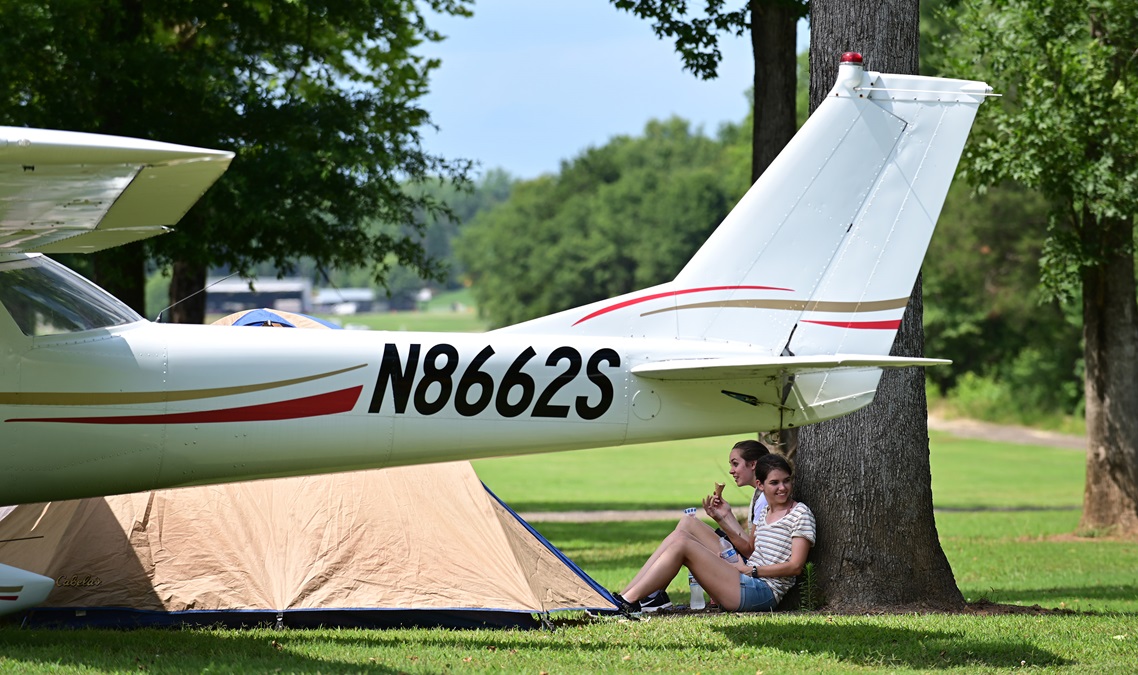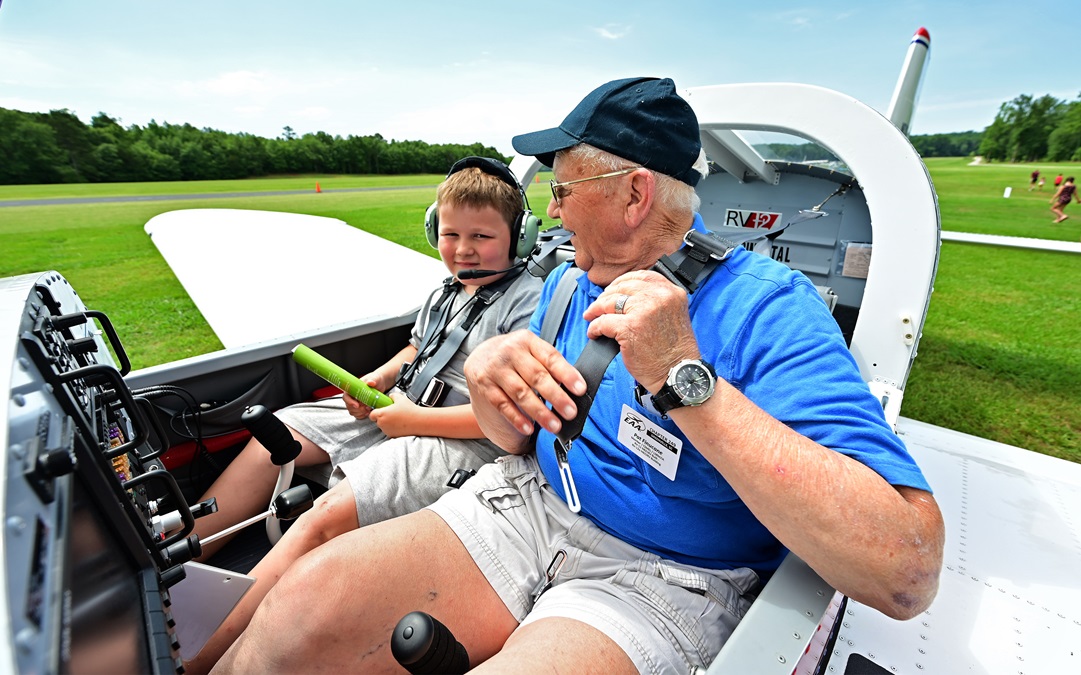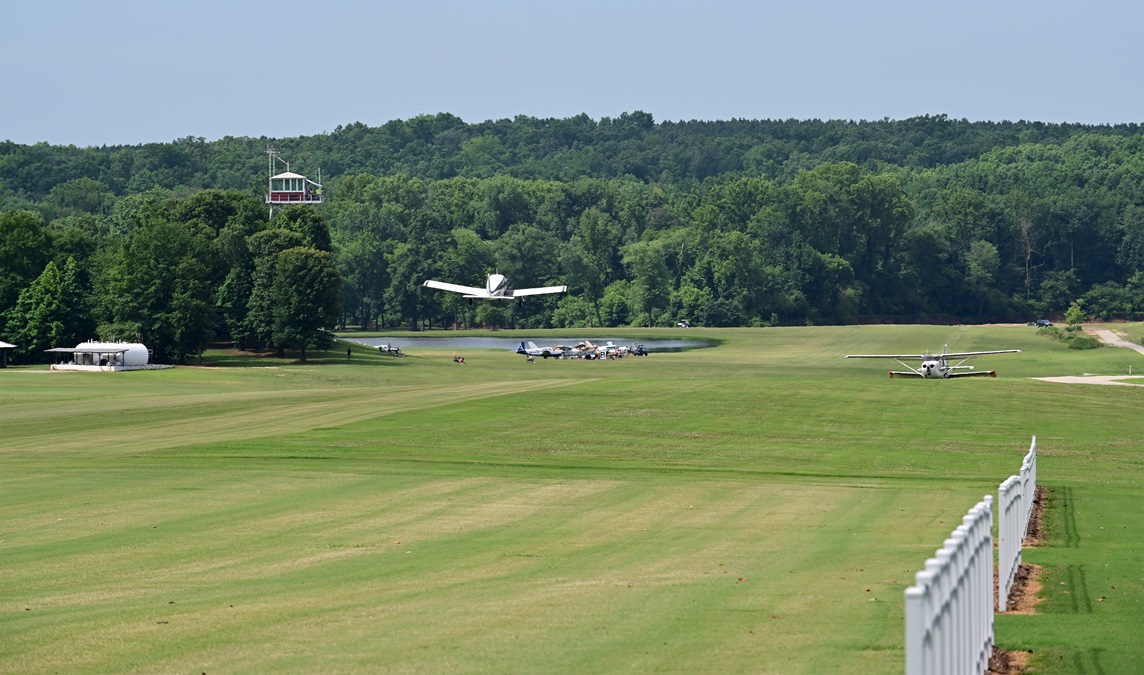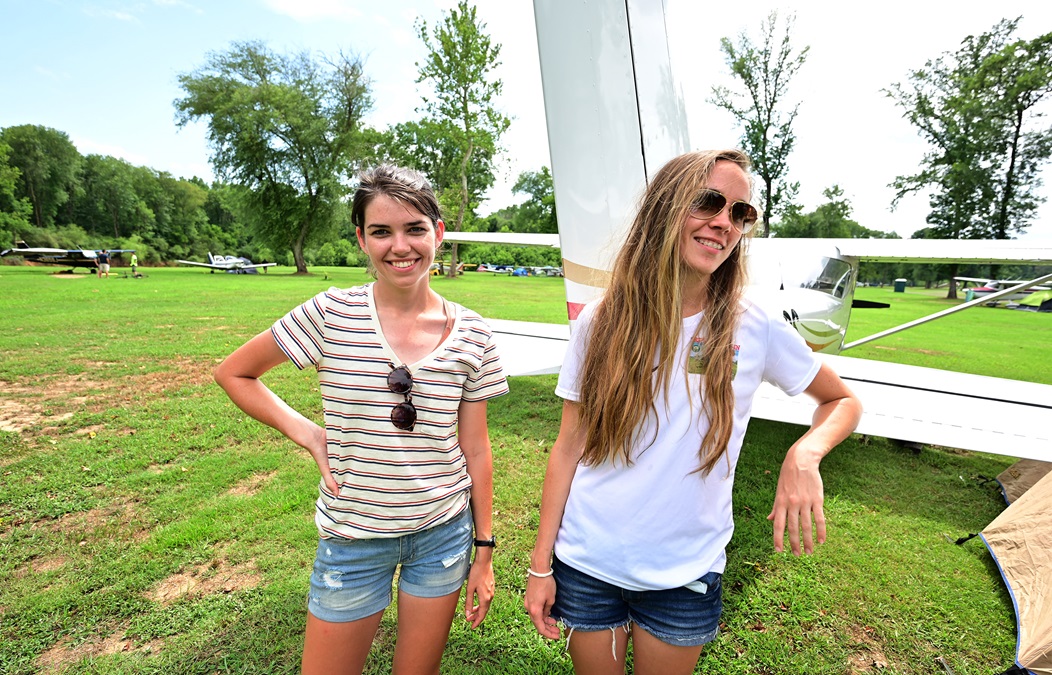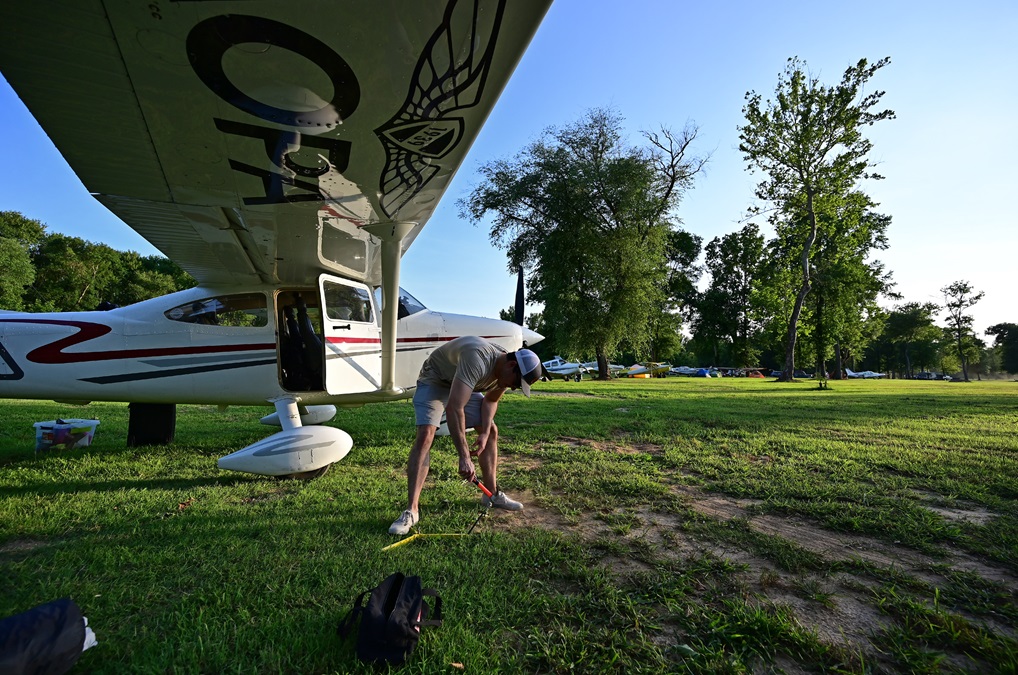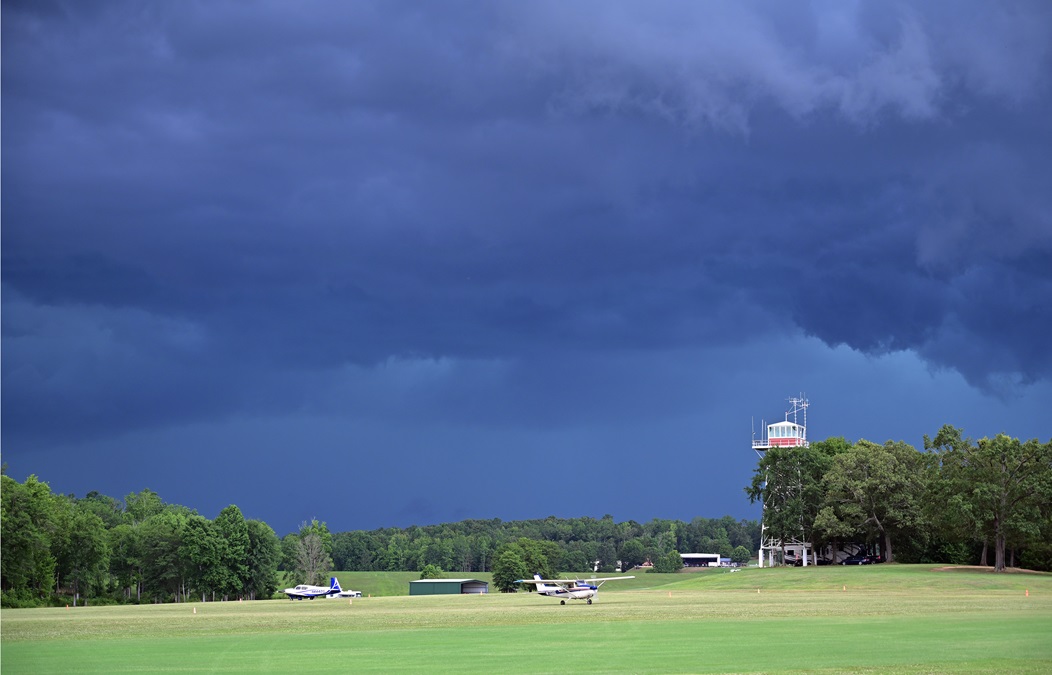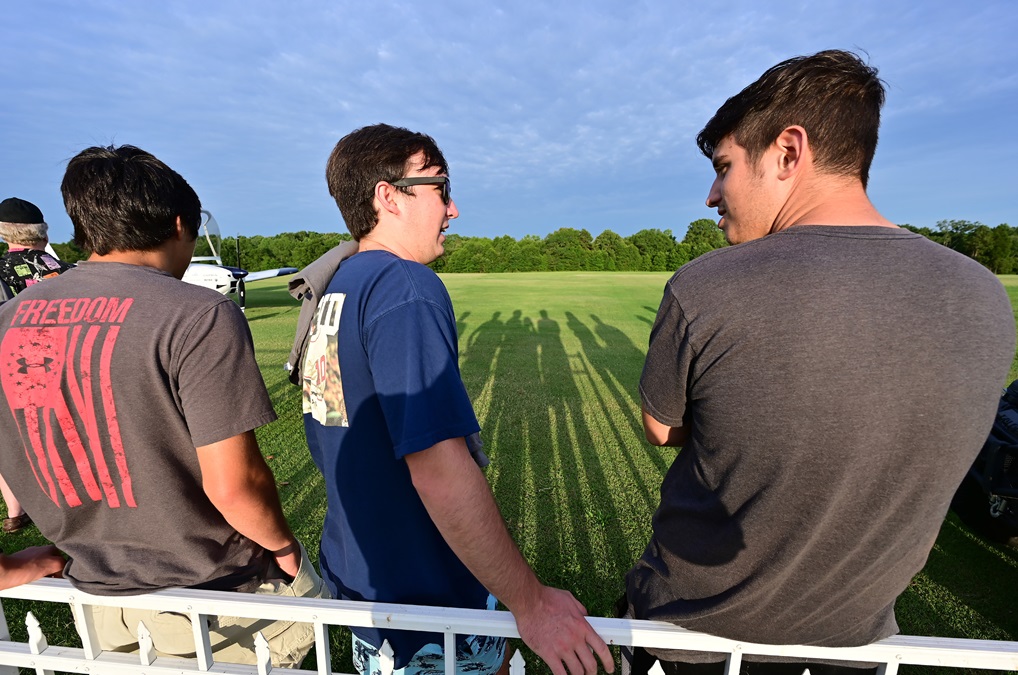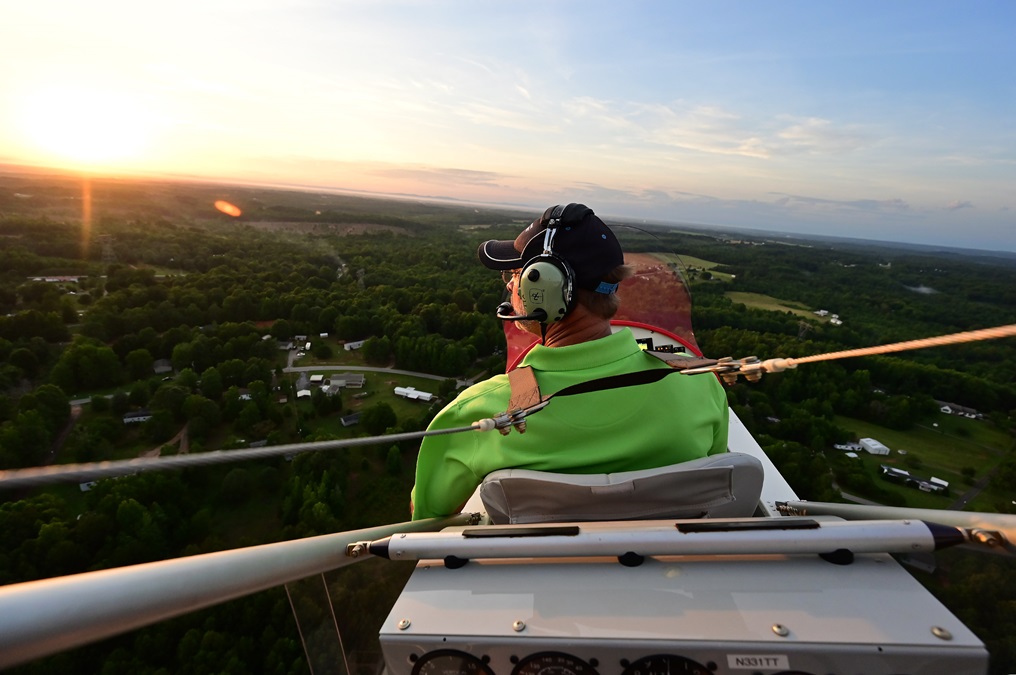Young Aviators Fly-In delivers fun, fellowship, flying
Mentors give first flights to 83 youngsters
The food, fun, flying, and fellowship were amped up for an estimated 500 young and “young at heart” aviators who attended the Young Aviators Fly-In at Triple Tree Aerodrome June 21 to 23. The event was created by young pilots as part of aviation’s youth movement.
The second annual fly-in was co-founded by Cayla McLeod, a self-described “taildragger girl” and private pilot from Georgia, and commercial pilot Ryan Hunt. The excitement shared by aviation-minded youth and their mentors during the inaugural event impressed Triple Tree patriarch Pat Hartness so much that he opened the Woodruff, South Carolina, airfield for them to return for what McLeod and Hunt predicted would become a “young person’s Oshkosh.”
Ritch recalled her first landing on a grass runway behind the controls of her family’s Cessna 150 and beamed with pride. “It was so much fun!” she exclaimed while viewing dozens of aircraft that dotted the camping area near a pond, stream, and extensive grass taxiways.
Deluxe restroom and shower facilities made camping a good choice for many pilots, and a gazebo at the approach end of Runway 3 was perfect for airplane watching and for judging landings.
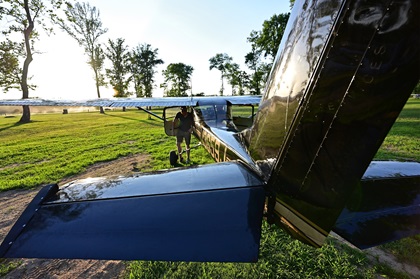
AOPA social media guru Kevin Cortes and I flew down from Frederick, Maryland, after a morning delay due to strong winds that would have been uncomfortable in our fully loaded Cessna 182. After several hours of sporty flying, we judged our landing in the Skylane as a solid seven out of 10 at Hartness’s 7,000-foot-long bent-grass runway. There’s videotape evidence from four cameras proving that it wasn’t terrible—but there is ample room for improvement.
After setting up his tent, Cortes shared Instagram stories and social media handles with the youth movement, and we met the influencers that contributed to the fly-in’s continuing success.
Cortes scored extra points for braving a raging late-night thunderstorm. “It was really bad,” he confided. “At one point I saw people jumping out of their tents and into their airplanes.”
Our team also included AOPA Air Safety Institute video producers Tyler Pangborn and Kurt Sensenbrenner, who waited out the first day’s weather before embarking on a four-hour cross country in a yellow Cessna 172 that is affectionately known as “The Unicorn,” and they joined Cortes camping out. Since I was a “young at heart” pilot with a bag of camera gear that needed charging, I opted for a Triple Tree discounted partner motel where I could also scout the weather.
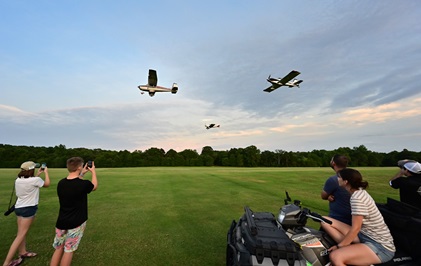
AOPA provided two prize giveaway backpacks and sponsored a Saturday night dinner for about 150 overnight attendees and volunteers. A live blues band provided entertainment, and complimentary AOPA eightieth-anniversary stickers were so popular that we gave them all away.
The weekend event was designed to be a low-cost affair that would appeal to college-aged pilots who are typically on a strict budget. Attendees were responsible for only one meal, and the remainder of the tab was picked up by other aviation organizations and businesses including the Experimental Aircraft Association, the Academy of Model Aeronautics, Chick-fil-A, Textron Aviation, UPS, Waffle House, and others.
McLeod recalled that her interest in aviation began after a Young Eagles flight at age 15, so she said she was tickled to learn from EAA Chapter 249 Young Eagles flight chair Dale Ellis that his crew of “14 pilots and their airplanes” organized 83 first flights for youth—a new chapter record. Ellis thanked them and “countless EAA members and friends” who helped out on the ground with permission slips, hydration, and other tasks to keep the youths happy and the flights safe.
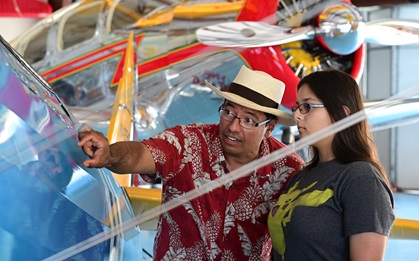
Private pilot Felix Lopez brought his entire family, including his wife and three daughters, “to be part of this, it’s a really exciting event,” he said while inspecting a Boeing Stearman biplane parked among a restored Spartan Executive, a North American P–51 Mustang, and dozens of RC aircraft. “My daughters got to fly with a female pilot, and it was an unbelievable flight” for them.
Chart it All founder Trevor Simoneau soloed in Florida on June 21—the day of his sixteenth birthday—and then flew to the Appalachian foothills to celebrate with fellow aviation-minded youth. He said he was pleased to see hundreds of young people soaking up aviation and he offered advice for those who might not know how to get started. “Go to your local airport and network, meet people, and make contacts. The thing that I love about aviation is that everyone is so generous because at one point they were in your same position. Take advantage of that, for sure.”
Sunset flights in a Van’s Aircraft RV–12 and a Lockwood AirCam heralded the oncoming evening as the sky turned orange, pink, and violet to a tune of croaking frogs punctuated by low approaches with music from Carolina Coast Band filtering through the trees.
Aviation maintenance student, Cessna 140 owner, and instrument-rated private pilot with commercial glider privileges Joseph Lacharite joined McLeod, Langford, Ritch, and a dozen others at the north end of the landing strip to make photos, chat, and to get to know each other better.
Lacharite said sailplane flying could be more cost-efficient for some young people and in his case, it led to additional certificates and ratings. He transitioned to powered fixed-wing aircraft and “just added my instrument rating about two weeks ago.” He said he flew from Florida to the Young Aviators Fly-In “to see what it’s all about. It’s good that we’re exposing a lot of people to aviation, and I think we can try to make aviation more feasible” for them too.

